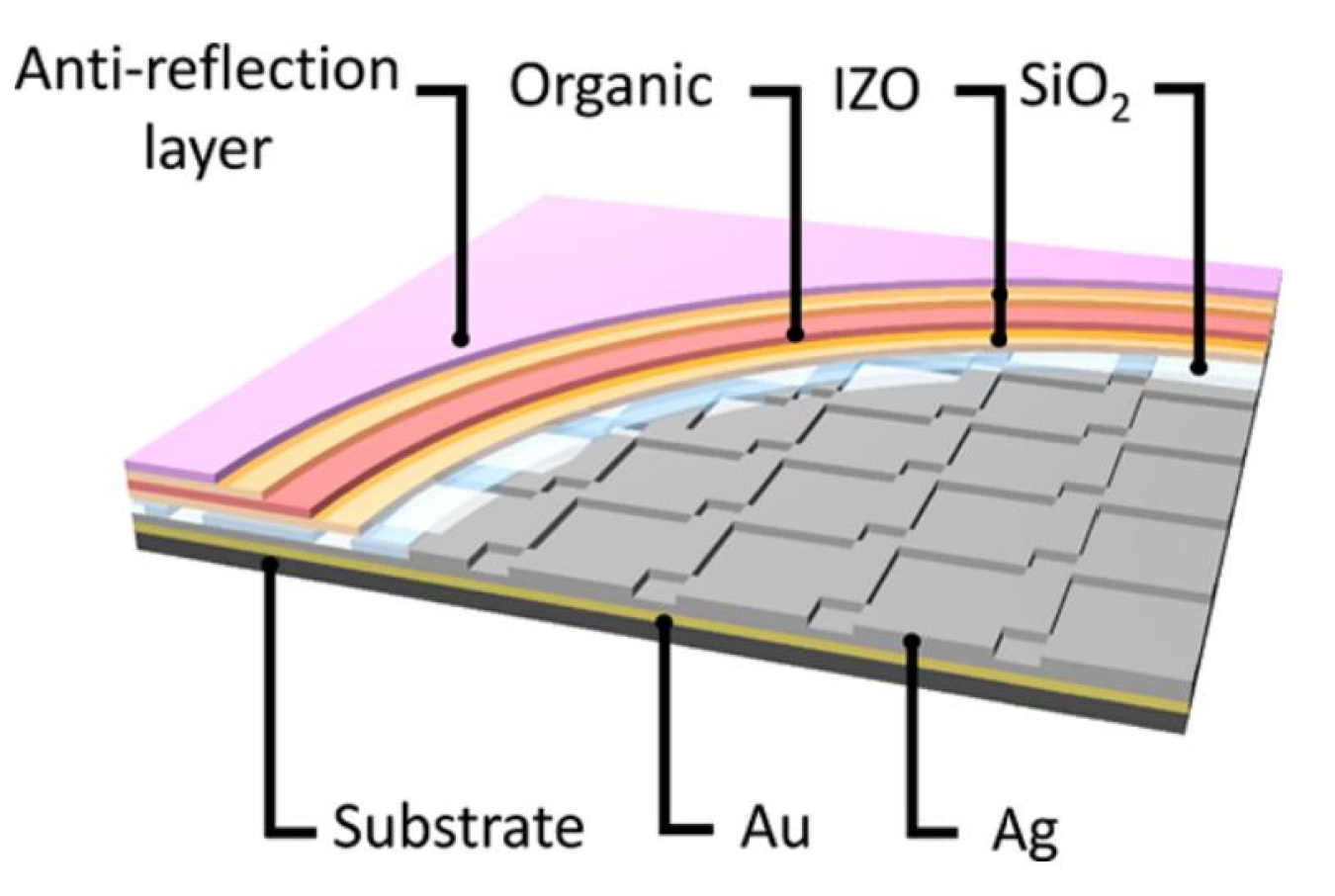
The University of Michigan is working on eliminating plasmon losses in high-efficiency white OLED devices for lighting applications. Phosphorescent OLEDs have consistently demonstrated up to 100% internal quantum efficiency; i.e., one photon is emitted for every electron injected. However, without light-extraction techniques, approximately 80% of the emitted photons are trapped and lost inside the device.
This project is combining a theoretical understanding of the fundamentals of light propagation in OLEDs with innovative experimental approaches to achieve a light-extraction efficiency of >70%. The researchers have introduced two completely new methods for light extraction that are potentially inexpensive, independent of the illumination spectrum, and compatible with existing OLED device designs.
In the first year of the project, they've already achieved >65% light-extraction efficiency, with a clear sight to exceeding all of the targets. When combined with the features of low cost, lack of wavelength dependence, and compatibility with conventional OLED designs, the technology approaches being developed are poised to revolutionize the efficiency of OLED lighting sources. (August 2017)
Return to Research Highlights.

